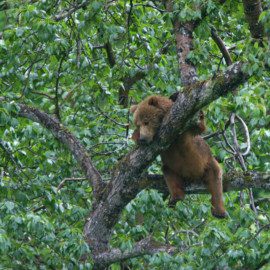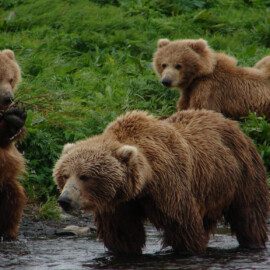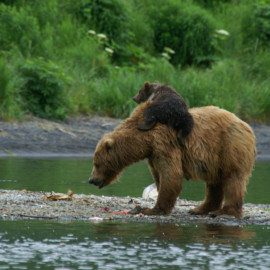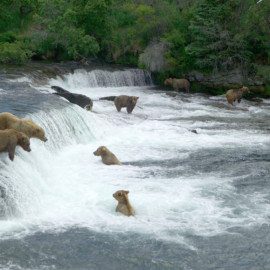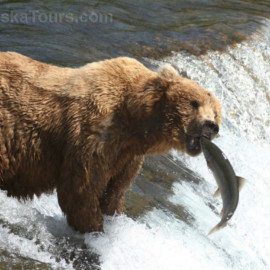When bear viewing in Alaska, how do you tell the difference between a grizzly bear and a brown bear? Or are they synonymous?
Similar to figuring out the difference between a reindeer and a caribou, identifying the difference between a grizzly and a brown bear is not intuitive. While grizzly bears and brown bears are technically the same species, Ursus arctos, the distinction between these two mammals is actually based on where they live and what they eat.
Grizzly Bears in Alaska
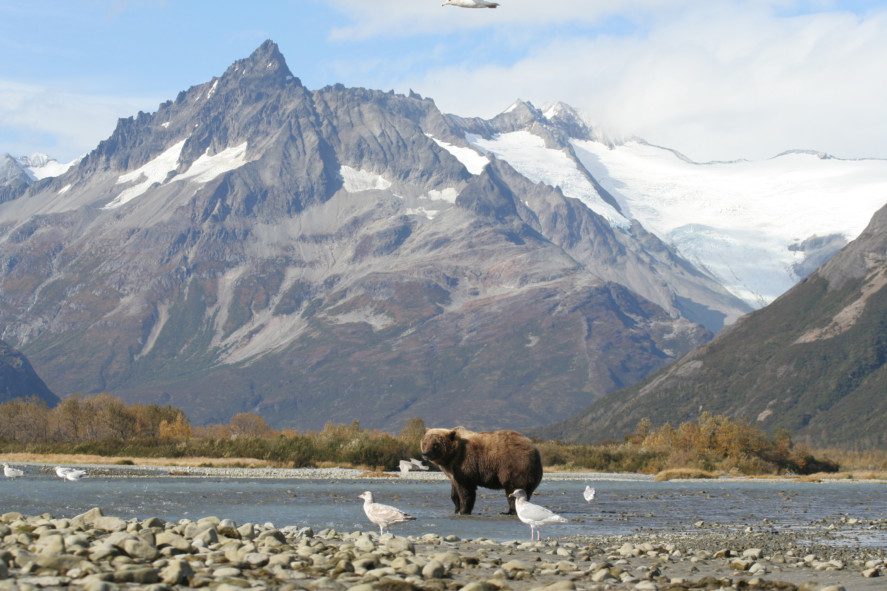
“Grizzly bears” are also brown bears, but as their habitat is on mountain slopes, tundra plains and inland forests they are typically smaller in size than coastal bears. You will hear the term grizzly describing inland bears as their food source is quite varied and less plentiful than along the coast. Grizzlies live in the Interior and Arctic regions of Alaska, such as Denali National Park and Gates of the Arctic National Park. “Grizzlies” (as they are fondly referred to locally) tend to eat roots, grubs, and small rodents. Because of the difficulty in finding an abundance of food, grizzly bears tend to be smaller and more aggressive than brown bears. The term “grizzly” comes from their fur’s color, with gray typically on their shoulders and hump. “Grizzly” is not in reference to “grisly” or horrific! The male boars tend to roam individually, although a female sow may have cubs accompanying her for up to two years at a time.
Alaska Brown Bears

The term “brown bear” is the common term used by Alaskans for bears found in coastal areas. Their habitat includes rich grassland and salmon filled streams offering a bountiful food source. You will find “brownies” in coastal areas of Alaska, like Lake Clark National Park or Katmai National Park. Brown bears typically feast on fatty salmon in the summer, as well as clams, sedge grass, and other local sustenance. Their consistently plentiful food supply allows them to grow larger than grizzlies and appear to be a bit more fat and happy. They will still violently defend their cubs and territory, but they don’t generally see people as a meal or competition. You may see many brown bears congregating in one place when there is enough for everyone to eat.
Imagine standing so close to a 500-pound Alaskan brown bear that you can hear it crunching on a salmon snack. Heck, you can even smell it and its salmon snack. This hair-raising bear-viewing opportunity can be yours in Alaska.
Kodiak Bears and Admiralty Island Bears
The bears on Kodiak and Admiralty Islands are also brown bears. However, because of their island habitat isolation, they have developed unique genes that set them apart as subspecies. Biologists can tell the difference upon close inspection and genetic testing, but they do not look or act noticeably different from their mainland brown bear cousins.

Alaska is the only state with not only brown bears and grizzlies, but also black bears and polar bears.
Black Bears in Alaska
Black bears in Alaska are found over most of the forested areas of the state except the Seward Peninsula, on the Yukon-Kuskokwim Delta, or north of the Brooks Range. Black is the most often encountered color, but brown or cinnamon bears are often seen in south-central Alaska and the southeastern mainland.
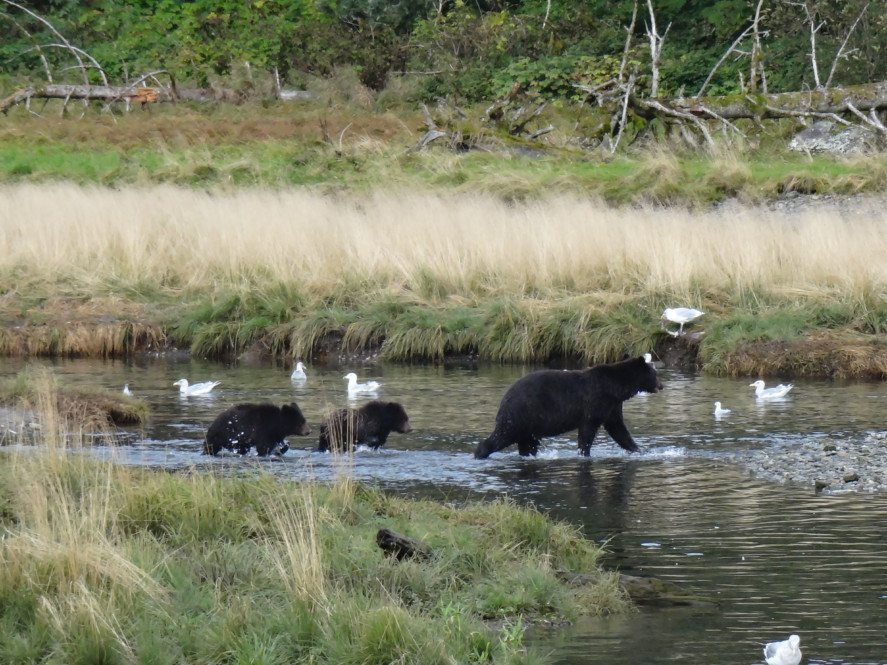
Polar Bears
Polar bears and brown bears actually evolved from a common ancestor and are still closely related. Their white color is a result of the remote arctic environment and they inhabit the northern hemisphere, nearly always in association with sea ice. Due to their remote habitat, Polar bear are not frequently seen by visitors to Alaska.
Ask us about planning a bear viewing trip to experience these amazing creatures up close and personally yourself!
- Brown bear
- Brown bears
- Brown bears
- Brooks Falls Bears
- Bear catching salmon
- Lake Clark bear safari

